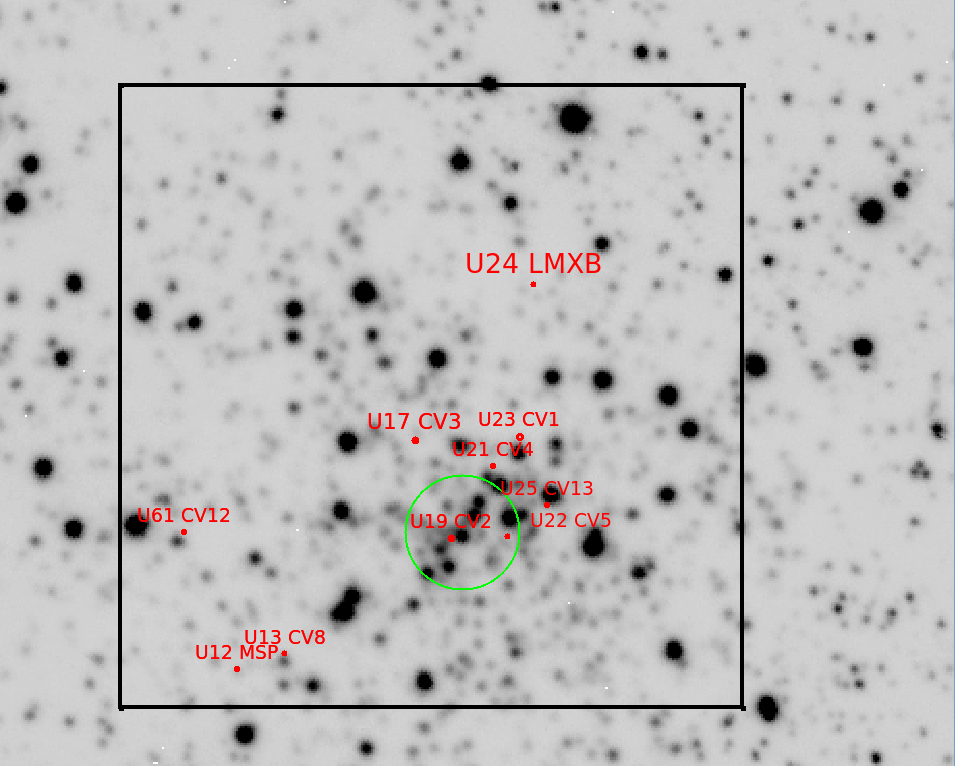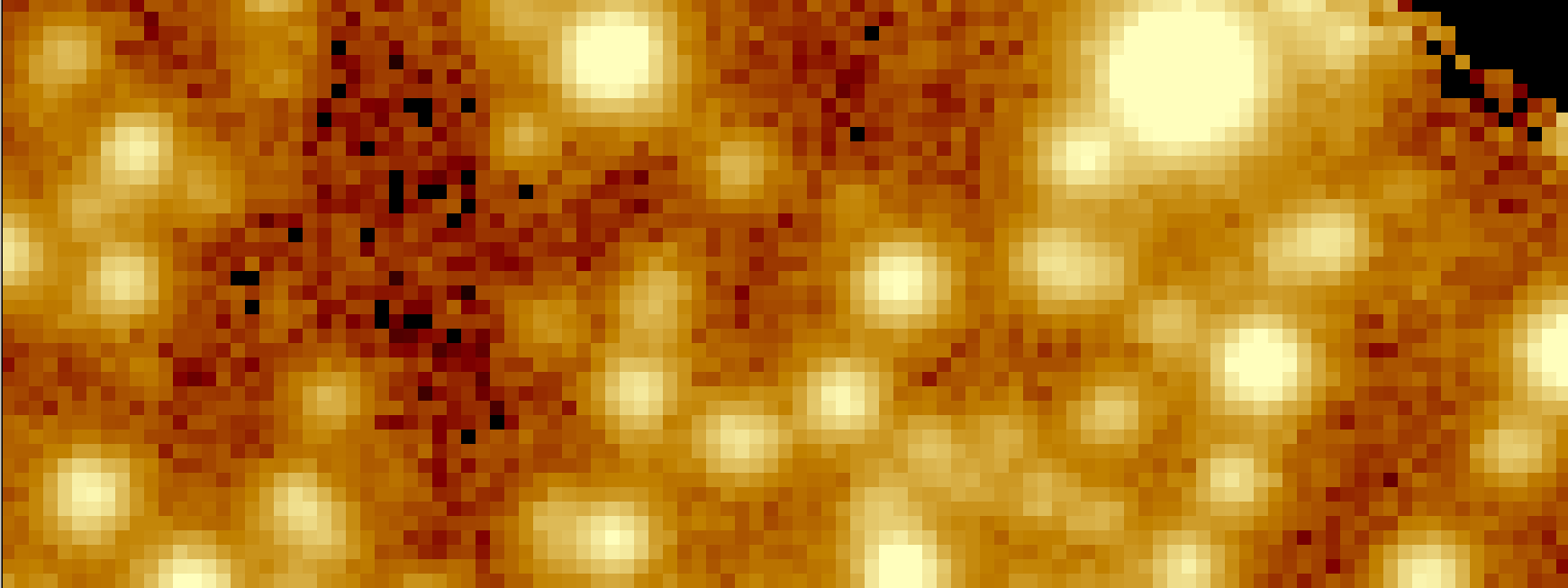Better late than never
I have been slacking a bit writing here, but hopefully I will continue to write more often.
Core Radius
When trying to get a value for the core radius of NGC 6397 I found two values. One from Harris. He gives a value of 3 arcsec, but in the section “previous analysis of NGC 6397” they cite work done with the Hubble Space Telescope they get a core collapse of around 5.5 arcsec.
Proposal
For the proposal to ask for observation time to observe the neutron star, U24. It is a LMXB. Dr. Sebastien ask me to get some pictures for the proposal.


Aligning X-ray and MUSE data
The astrometry of the chandra image and MUSE data are not perfect, so they don’t match exactly. With a manually created catalog of the brightest X-ray sources in the image, I try to find it in the MUSE datacube and then iterate over them to try to get the optimal rotation and the best reference star. So far I only have the CVs in the center exposure and one U10 that is in Region 5 as defined by this image:
 .
.
The code is really slow and I should optimize it and try with ccmap to see if I get similar answers. The code and catalog is in the GitHub repo in the directory scripts/misc/Xray. There I include the manually done catalog for MUSE and Chandra and how to call the script from bash to iterate.
All regions combine
Using the RA and DEC in the header of the white images and with the scikit learn K-means clusterin I was able to cluster all the different expsures into regions. The result is the picure above. The code is in the autocombine folder of the scripts directory of the GitHub repo.
For some reason the k-mean of scipy was giving me the wrong answer. I should have play more with the initial guess and number of iteration, but the scikit learn worked great.
Python
To ignore the error messages just called the script with -W"ignore".
To-Do
- [x]
Align X-ray data with MUSE.Really slow since check all possibilities. - [x]
Try to figure out weird line in supposed place of the qLMXB U24.Maybe noise. We calculated the flux in H \(alpha\) and Dr. Sebastien wrote a proposal to ask for time in MUSE and study with more detail. - [x] Forget about the line and extract H\(alpha\) emmision.
References
Martinazzi E, Pieres A, Kepler SO, Costa JES, Bonatto C, Bica E. Probing mass segregation in the globular cluster NGC 6397. Monthly Notices of the Royal Astronomical Society [Internet]. 2014 Aug 1 [cited 2016 Mar 29];442:3105–11. Available from: http://adsabs.harvard.edu/abs/2014MNRAS.442.3105M
Harris WE. A Catalog of Parameters for Globular Clusters in the Milky Way. The Astronomical Journal [Internet]. 1996 Oct 1 [cited 2016 Mar 31];112:1487. Available from: http://adsabs.harvard.edu/abs/1996AJ….112.1487H